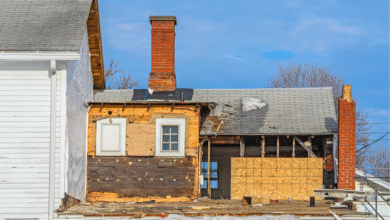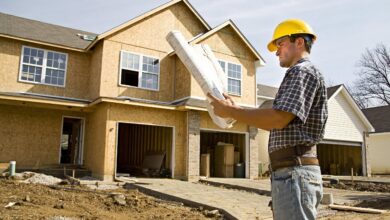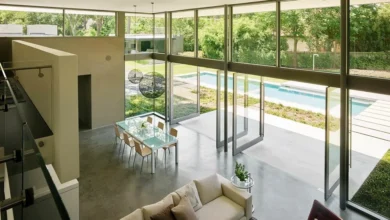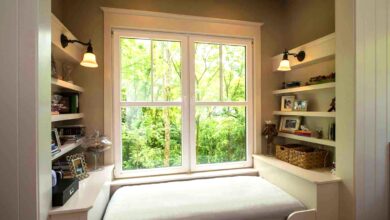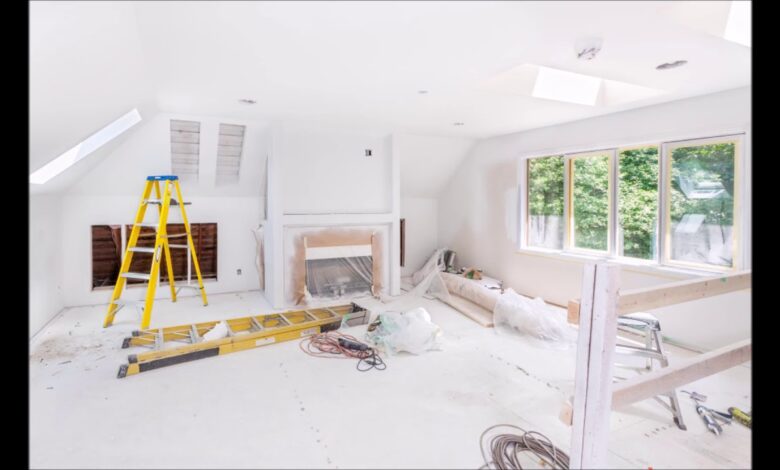
Embarking on a home renovation project can be one of the most exciting yet challenging experiences for any homeowner. Whether you’re planning a complete house makeover or tackling specific home improvement tasks, the potential for costly mistakes lurks around every corner. According to recent industry studies, over 80% of homeowners exceed their initial renovation budget, and nearly 60% encounter significant delays due to poor planning and avoidable errors.
The allure of transforming your living space into your dream home often overshadows the critical importance of proper preparation and execution. Many homeowners dive headfirst into remodeling projects without fully understanding the complexities involved, leading to frustration, financial strain, and subpar results. From underestimating costs and timelines to making poor material choices and skipping essential permits, renovation mistakes can quickly turn your dream project into a nightmare.
Understanding these common pitfalls is crucial for anyone considering a home renovation. The difference between a successful transformation and a costly disaster often lies in the details – proper budget planning, thorough research, realistic timeline expectations, and knowing when to hire professionals versus attempting DIY renovations. By learning from the mistakes of others, you can navigate the renovation process more smoothly, protect your investment, and achieve the results you’ve envisioned.
This comprehensive guide will walk you through the most frequent home renovation mistakes and provide actionable strategies to avoid them. Whether you’re a first-time renovator or have previous experience, these insights will help you make informed decisions, save money, and ensure your project runs as smoothly as possible. From initial planning to final touches, we’ll cover every aspect of the renovation process to help you achieve your home improvement goals without falling into common traps.
1. Inadequate Budget Planning and Cost Estimation
The Hidden Costs That Derail Projects
One of the most devastating renovation mistakes is failing to create a comprehensive and realistic budget. Many homeowners focus solely on material costs and contractor fees while overlooking the numerous hidden expenses that can quickly spiral out of control. Budget planning should account for at least 20-30% contingency funds to handle unexpected issues that inevitably arise during remodeling projects.
Common overlooked expenses include permit fees, utility upgrades, structural modifications, disposal costs for old materials, and temporary living arrangements if the renovation affects essential areas like kitchens or bathrooms. Additionally, many homeowners underestimate the true cost of quality materials and skilled labor, leading to compromises that can affect the project’s longevity and value.
Creating a Realistic Financial Plan
Successful home renovation requires thorough research and multiple quotes from different contractors and suppliers. Start by breaking down your project into specific categories: demolition, structural work, electrical, plumbing, flooring, paint, fixtures, and finishing touches. Obtain detailed estimates for each category and compare prices from at least three different sources.
Consider the long-term value of your investments. While it might be tempting to choose the cheapest options, quality materials and skilled craftsmanship often provide better returns on investment and fewer maintenance issues down the road. Remember that some home improvement projects offer better resale value than others, so factor this into your decision-making process.
2. Skipping Proper Permits and Legal Requirements
Understanding Permit Requirements
Many homeowners view building permits as unnecessary red tape, but this renovation mistake can have serious legal and financial consequences. Permits ensure that work meets local building codes and safety standards, protecting both your family and future buyers. Most major remodeling projects, including electrical work, plumbing modifications, structural changes, and additions, require permits from local authorities.
Working without proper permits can result in hefty fines, forced project delays, and complications when selling your home. Insurance companies may also deny claims for damage related to unpermitted work, leaving you financially vulnerable. Additionally, unpermitted work often needs to be redone to meet code requirements, doubling your costs and timeline.
Navigating the Permit Process
Research your local building codes and permit requirements early in the planning process. Contact your local building department to understand what permits you’ll need and their associated costs and timelines. Many contractors can handle permit applications as part of their services, but it’s important to verify that they’re properly licensed and insured.
Keep in mind that DIY renovations still require permits for major work, even if you’re doing the labor yourself. The permit process typically involves submitting detailed plans, paying fees, and scheduling inspections at various project stages. While this may seem cumbersome, proper permits protect your investment and ensure your home improvement projects meet safety standards.
3. Poor Contractor Selection and Management
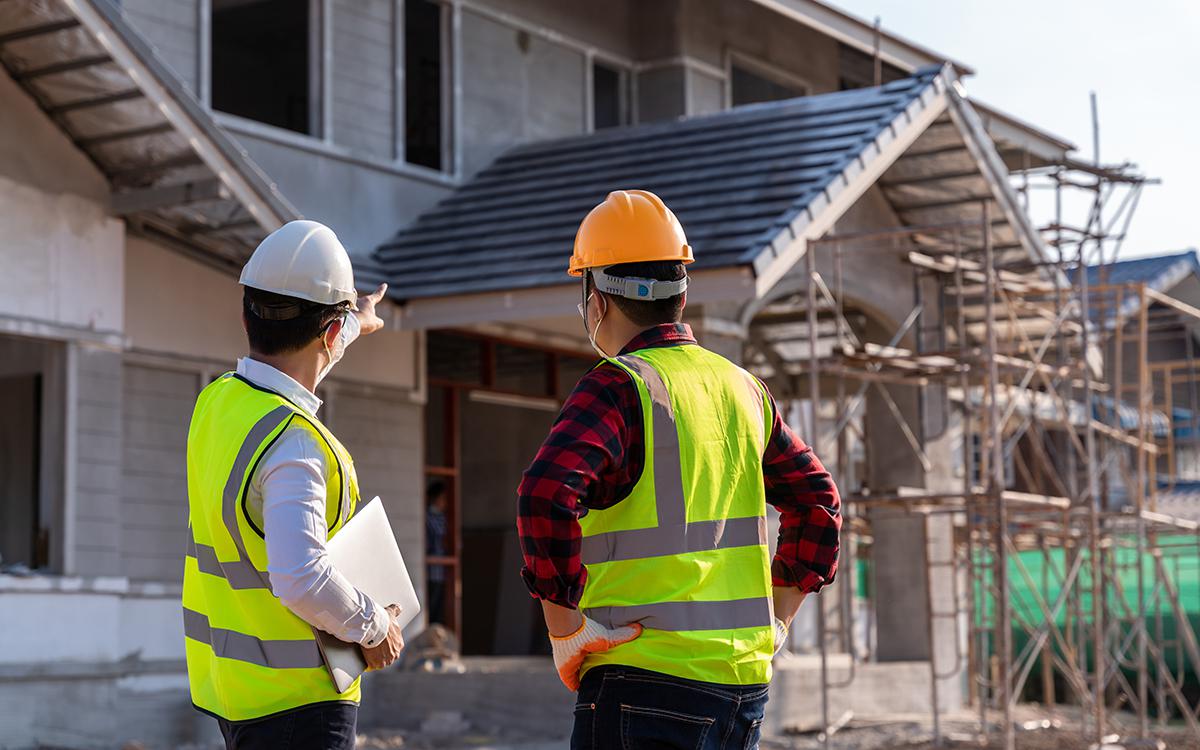
Red Flags in Contractor Selection
Choosing the wrong contractor is perhaps the most critical renovation mistake that can derail your entire project. Poor contractor selection can lead to substandard work, cost overruns, delays, and even legal disputes. Many homeowners make the mistake of selecting contractors based solely on price, without properly vetting their credentials, experience, and reputation.
Warning signs of unreliable contractors include door-to-door solicitation, demands for full payment up front, lack of proper licensing and insurance, no fixed business address, and pressure to sign contracts immediately. Additionally, be wary of contractors who provide verbal estimates only, have no references from recent projects, or seem to have knowledge gaps about building codes and permits.
Establishing Clear Communication and Contracts
Successful remodeling projects require clear communication and detailed contracts that outline scope, timeline, materials, and payment schedules. A good contractor will provide a detailed written estimate, maintain open communication throughout the project, and be transparent about any challenges or changes that arise.
Before hiring any contractor, verify their license status, insurance coverage, and Better Business Bureau rating. Request and actually contact references from recent projects, and consider visiting completed work sites if possible. Establish a payment schedule tied to project milestones rather than paying large sums upfront, and ensure all change orders are documented in writing.
4. Inadequate Planning and Design Considerations
The Importance of Comprehensive Planning
Rushing into home renovation without adequate planning is a recipe for costly mistakes and disappointing results. Many homeowners begin demolition or construction before fully thinking through their needs, lifestyle requirements, and long-term goals. This lack of planning often leads to poor space utilization, inadequate storage solutions, and design choices that don’t align with how the space will actually be used.
Effective planning involves analyzing your current and future needs, considering traffic flow patterns, evaluating natural lighting, and ensuring that new elements complement your home’s existing architecture. It’s also crucial to consider how different home improvement projects might affect each other and plan the sequence of work accordingly.
Designing for Function and Aesthetics
Balance is key when planning remodeling projects. While aesthetics are important, functionality should never be sacrificed for appearance. Consider how each space will be used daily and plan accordingly. For example, kitchen renovations should prioritize workflow efficiency and adequate storage, while bathroom renovations should focus on both comfort and accessibility.
Work with qualified designers or architects when tackling complex projects, especially those involving structural changes or space reconfigurations. Professional design services can help you avoid costly mistakes, maximize your space’s potential, and ensure that your vision aligns with practical considerations and building codes.
5. Ignoring Structural and Safety Issues
Identifying Hidden Problems
One of the most dangerous renovation mistakes is ignoring or inadequately addressing structural and safety issues discovered during the renovation process. Many older homes have hidden problems such as faulty wiring, outdated plumbing, asbestos, lead paint, or structural damage that must be addressed before cosmetic improvements can begin.
Attempting to work around these issues or cover them up can create serious safety hazards and violate building codes. Additionally, these problems often worsen over time if not properly addressed, leading to more extensive and expensive repairs later. Professional inspections before beginning major home renovation projects can identify these issues early and allow for proper planning and budgeting.
Prioritizing Safety and Code Compliance
Always prioritize safety and building code compliance over aesthetics or cost savings. This means upgrading electrical systems to modern standards, ensuring proper ventilation, addressing moisture issues, and using appropriate materials for different applications. While these upgrades may not be visible in the finished project, they’re essential for your family’s safety and your home’s long-term value.
Work with qualified professionals to assess and address structural issues. This might include engineers for load-bearing modifications, certified electricians for electrical upgrades, and licensed plumbers for water and sewer line work. Remember that cutting corners on safety-related issues can have catastrophic consequences that far exceed any short-term savings.
6. Unrealistic Timeline Expectations
Understanding Project Duration Factors
Many homeowners severely underestimate the time required for remodeling projects, leading to frustration, disrupted daily routines, and rushed decisions that compromise quality. Realistic timeline planning must account for permit approval processes, material delivery delays, weather conditions, inspector availability, and the inevitable unexpected issues that arise during renovation work.
Complex projects involving multiple trades require careful coordination and often experience delays when one phase runs longer than expected. Additionally, quality work takes time, and rushing contractors often leads to shortcuts and substandard results. Home improvement projects also tend to expand in scope as homeowners discover additional issues or decide to upgrade other elements while work is underway.
Building Buffer Time and Managing Expectations
Professional contractors typically add 20-50% buffer time to their initial estimates to account for unforeseen circumstances. As a homeowner, you should plan for even longer timelines, especially if you’re living in the home during renovation. Major kitchen renovations might take 6-12 weeks, while whole-house renovations can extend for months.
Develop contingency plans for extended timelines, such as temporary kitchen arrangements or alternative bathroom facilities. Communicate regularly with your contractor about progress and potential delays, and avoid making major decisions under time pressure. Remember that quality work is more important than speed, and rushing projects often leads to mistakes that are costly to fix later.
7. DIY Overconfidence and Skill Limitations
Knowing Your Limits
The popularity of home improvement television shows and online tutorials has led many homeowners to overestimate their DIY renovation capabilities. While some projects are well-suited for dedicated amateurs, others require specialized skills, tools, and experience that most homeowners lack. Attempting complex work without proper expertise can result in poor results, safety hazards, and costly repairs.
Electrical work, plumbing modifications, structural changes, and gas line work should typically be left to licensed professionals. These systems have strict code requirements and safety implications that extend far beyond the immediate project. Additionally, insurance companies may not cover damage caused by unprofessional work, and unpermitted DIY work can affect your home’s resale value.
Strategic DIY Approach
Focus your DIY renovations on projects that match your skill level and available time. Painting, basic carpentry, tile installation, and landscaping are often good candidates for homeowner completion. However, even these projects require proper preparation, quality tools, and realistic time commitments to achieve professional results.
Before attempting any DIY work, honestly assess your skills, available time, and tolerance for imperfection. Consider the cost of tools and materials against hiring professionals, and factor in the learning curve and potential for mistakes. Sometimes, handling preparation work yourself and leaving complex tasks to professionals provides the best balance of cost savings and quality results.
8. Material Selection and Quality Issues
The False Economy of Cheap Materials
Choosing low-quality materials to save money is a renovation mistake that often costs more in the long run. Cheap materials may look similar to quality alternatives initially, but they typically wear poorly, require more maintenance, and need replacement sooner than higher-grade options. This is particularly problematic in high-use areas like kitchens, bathrooms, and flooring.
Consider the lifecycle cost of materials rather than just their initial price. Quality materials often come with better warranties, perform better over time, and contribute more to your home’s resale value. Additionally, the labor cost to install cheap materials is often the same as for quality materials, making the upgrade relatively cost-effective.
Balancing Quality and Budget
Research materials thoroughly before making selections, reading review,s and comparing warranties from different manufacturers. Focus your budget on materials that will have the greatest impact on daily use and long-term value, such as flooring, kitchen countertops, and bathroom fixtures. You can often save money on less visible elements like framing lumber or insulation while investing in quality finish materials.
Work with your contractor to understand which material upgrades provide the best value for your specific project and budget. They can often suggest alternatives that provide similar performance at different price points, helping you make informed decisions that balance quality, aesthetics, and cost.
9. Inadequate Communication and Change Management
Establishing Clear Communication Protocols
Poor communication between homeowners and contractors is a leading cause of renovation mistakes, delays, and cost overruns. Many problems arise from unclear expectations, assumptions about work scope, and inadequate documentation of decisions and changes. Establishing clear communication protocols from the project’s beginning can prevent many issues and ensure that everyone remains on the same page throughout the renovation.
Regular project meetings, written communication for all decisions, and clear documentation of any changes help maintain project momentum and prevent misunderstandings. It’s also important to designate a single point of contact from your household to avoid conflicting instructions and confusion among workers.
Managing Scope Creep and Changes
Home renovation projects naturally evolve as work progresses and homeowners see new possibilities or discover additional issues. While some changes are inevitable, uncontrolled scope creep can derail budgets and timelines. Establish a formal change order process that documents all modifications in writing, including cost and schedule impacts.
Before approving any changes, consider their impact on the overall project budget, timeline, and design coherence. Some changes are more cost-effective to implement during construction, while others can be deferred to future projects. Work with your contractor to understand the full implications of proposed changes before making decisions.
10. Neglecting Functionality for Aesthetics

The Importance of Practical Design
Many homeowners become so focused on creating beautiful spaces that they neglect practical considerations that affect daily life. Remodeling projects that prioritize appearance over functionality often result in spaces that look great in photos but don’t work well for actual living. This is particularly problematic in kitchens and bathrooms, where workflow and efficiency directly impact daily routines.
Common functionality mistakes include inadequate storage, poor lighting, insufficient electrical outlets, impractical fixture placement, and ignoring traffic flow patterns. While these issues might not be immediately apparent, they become frustrating limitations that affect your enjoyment of the space and potentially impact resale value.
More Read: Home Renovation Mistakes That Cost You Thousands
Creating Beautiful and Functional Spaces
The best home improvement projects successfully balance aesthetics with practicality. Start by analyzing how you actually use each space and what improvements would have the greatest impact on your daily life. Consider factors such as storage needs, lighting requirements, traffic patterns, and maintenance requirements when making design decisions.
Work with designers who understand both form and function, and don’t be afraid to prioritize practical considerations over purely aesthetic choices. Remember that a space that functions well for your lifestyle will be more satisfying in the long term than one that simply looks good but doesn’t meet your practical needs.
Conclusion
Successful home renovation requires careful planning, realistic expectations, and learning from common renovation mistakes that have derailed countless projects. By avoiding inadequate budget planning, skipping permits, poor contractor selection, insufficient planning, ignoring safety issues, unrealistic timelines, DIY overconfidence, cheap materials, poor communication, and neglecting functionality.
Homeowners can dramatically increase their chances of achieving satisfying results within budget and timeline constraints. Remember that quality remodeling projects are investments in your home’s value and your family’s comfort, making proper planning and execution essential for long-term satisfaction and financial return.



